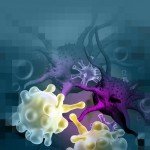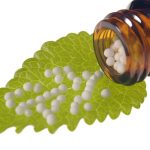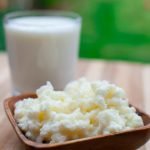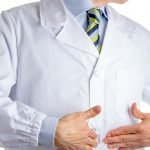Naturopathic Treatment of Anal Fissure
Thomas Kruzel, ND
Anal fissure is a common finding in patients presenting with rectal pain, and is often associated with internal hemorrhoids. While there are only a few allopathic treatments for anal fissure, this condition is quite responsive to treatment with a variety of natural medicines.
Anal fissure is a slit-like separation of the anal mucosa that lies below the dentate line, similar to having a cracked lip. The majority of fissures are usually found in the posterior midline region (70% to 80%) while anterior midline lesions (10% to 20%) are more commonly seen in women. Anal fissure in children is not all that uncommon as well, often being associated with chronic diarrhea or hard stool.
Anal fissures are very painful because of their somatic innervation resulting from spasm of the anal sphincter in response to stretching and tearing during the passage of stool. The presence of an anal fissure will trigger a vicious cycle of pain causing sphincter spasm, which contributes to a tightening of the sphincter and increased pain with passage of stool. Patients usually have severe pain during, and for some time after, defecation and bleeding is not uncommon. As the lesion becomes larger, it may ulcerate and become infected.
Patients will often relate a history of periodic episodes of rectal pain followed by periods of remission for some months when they are pain free. Some triggering event will cause the cycle to begin again, and eventually the episodes become more frequent and severe. Often by the time they have made it to your office they are in severe pain and spasm and quite anxious for relief.
Anal fissure can be caused by passage of large, hard stools, trauma from child birth, chronic diarrhea, trauma from insertion of foreign objects, food allergy, or prolonged straining to pass stool. Infants and young children who consume large amounts of cow’s milk are more likely to develop anal fissure and chronic constipation, especially if they were breast-fed for a shorter period of time. Many of the patients who develop anal fissure display intense, compulsive personalities that may contribute to their formation, as well as the ability to heal. A previous anal or rectal operation, syphilis, or Crohn’s disease also predisposes the patient to fissure development.
Clinicians should consider the presence of Crohn’s disease, especially if the patient is younger, there is a history of periodic or chronic diarrhea, and the fissure lies in the anterioposterior vertical axis. In my experience, patients who present with chronic fissure almost always have some symptomology of irritable bowel disease or chronic maldigestion. Squamous cell carcinoma, syphilitic ulcers and rarely tuberculosis should be considered as part of the differential diagnosis. Spasm of the levator ani muscle may also make one think of anal fissure, but no lesion will be present.
Examination of a patient with an active fissure may be difficult because of the pain and spasm, and anoscopic exam is often out of the question unless anesthesia is used. A localized injection of 1% or 2% lidocaine into the rectal sphincter at 3 o’clock and 9 o’clock can help relax it enough for an examination to occur. Anal fissures can often be seen without using an anoscope simply by pulling back on the anal skin and examining the tissue. Presence of a sentinel pile or enlarged papillae suggest chronic anal fissure and are the result of inflammation and the body’s attempt to protect the inflamed area. Anal spasm may be marked making it difficult to perform an examination, and anal stenosis and fibrosis may be present if the condition has been chronic.
Treatment of anal fissure can prove to be one of the more difficult courses of therapy for both the patient as well as the clinician. While surgical intervention will remove the lesion and alleviate the pain, invariably the lesion will return because the underlying cause has not been addressed. Additionally, surgical intervention often predisposes to fecal incontinence later in life. Therefore, medical management both in the short and long terms is necessary for complete resolution. Patients must be cautioned that the healing of a rectal fissure will have its periods of exacerbation and remission and that continuing on the treatment protocol is important despite the periodic setbacks that are often encountered. Educating the patient on this point upon initiation of therapy is essential to its success.
Conventional medical treatment consists of rectal dilation which can be very painful, internal sphincterotomy which will weaken the anal sphincter and can lead to fecal incontinence, and electrodessication or surgical excision.
Initial treatment should be to alleviate the pain and spasm, as often this is what has brought them to your office. Homeopathic medicines are excellent for this as they provide prompt relief if the simillimum is found and will aid the healing process. While most homeopathic medicines have some degree of symptomology associated with the anorectal area, a few are found to be indicated much more often than others. Therefore, knowledge of their materia medica with regard to presenting and keynote symptoms will often streamline the intake process allowing you to prescribe more quickly.
Some of the more often indicated medicines are Chamomilla, Graphites, Nitric acid, Ratanhia, Sepia, Silicea and Thuja. Frequent dosing and the use of high potencies such as 200C or 1M are generally the rule. While a number of these homeopathic medicines are considered “constitutional” prescriptions, smaller and lesser utilized medicines such as Aesculus, Paeonia, and Ratanhia will be indicated if keynote symptoms are present. It has been my experience that homeopathic medicines often work faster and provide greater pain relief than analgesics and narcotics.
A preparation of 0.2% glyceryl trinitrate can be used topically to relieve rectal spasm, as well as 5% lidocaine cream for localized pain. Glyceryl trinitrate has been shown in a number of studies to be effective in relieving rectal spasm as well as increasing blood flow to the anal sphincter. Additionally, protease 315 mg two capsules TID between meals and before bed will sometimes help to alleviate pain as well.
In order to facilitate healing of the fissure, I compound a topical cream consisting of Vitamins A and E, panthenol, calendula, goldenseal and Emu oil. This formula considerably enhances the healing process by providing nutrients essential for healing by second intention. Some of the commercial preparations also contain boric acid, which acts as a styptic. The cream should be applied topically after every bowel movement and at bedtime initially. As healing occurs, twice-daily use usually suffices until the lesion has resolved.
Iontophoresis using a zinc or copper electrode and applying a positive current will help to facilitate healing by hardening the underlying fissure, decreasing bleeding and affording pain relief. The patient lies on the negative dispersing pad and current is applied for 10 minutes at anywhere from 1 to10 milliamps.
Often patients have developed poor defecation technique and are in need of instruction. The patient should be instructed to not strain during passage of stool and to use cotton balls that have been moistened with water rather than toilet paper, chemical or alcohol wipes. Over-the-counter wipes that contain chemicals and alcohol break down the skin’s protective barrier making healing more difficult and infection more likely. Some patients are excessive cleaners and they should be instructed that it is unnecessary to wipe deep into the anal canal, as this will make the condition worse. Additionally, leaning forward with passage of stool allows for a change in the rectal angle and easier passage.
Sitz baths also aid in the healing process by providing increased blood flow to the area. If doing a sitz bath isn’t possible, alternately spraying hot and cold water on the perineal area will achieve the same result.
Increasing dietary fiber is necessary if the condition is due to chronic constipation, while chronic diarrhea can be managed through a variety of therapeutic approaches once the cause is found. Occasionally you will be presented with a patient whose dietary fiber intake is excessive. This can also lead to exacerbation of an anal fissure, but more likely results in a chronic proctitis. Diet changes are a must, especially if the anal fissure is associated with irritable bowel or Crohn’s disease. Higher rates of hemorrhoids and Crohn’s disease are seen in blood group O individuals and are felt to be due to food intolerance. I have found that placing a patient on a diet based upon their blood type is effective in preventing recurrence of fissures. I have had some cases where patients needed to follow it religiously, otherwise symptoms would return quickly. Foods most often associated with these cases were wheat, corn, and peanuts.
The clinical course varies from patient to patient and seems to be partially dependent upon how well they follow the treatment plan. Patients will often stop the treatment once their pain level has decreased but before complete healing has occurred. Patient education as to the healing process and what can be expected during its course is very important for successful treatment. I have found that frequent follow-up is needed to assess the healing process and reassure the patient. Once healing has occurred, maintaining proper bowel function and good dietary and bowel habits are necessary for prevention of further episodes.
 Thomas A. Kruzel, ND, is a naturopathic physician who is in private practice at the Scottsdale Natural Medicine & Healing Clinic in Scottsdale, Ariz. He is the former Vice President of Clinical Affairs and Chief Medical Officer at the Southwest College of Naturopathic Medicine in Phoenix, Ariz. He received a BA in Biology from the California State University at Northridge, and his Doctorate of Naturopathic Medicine degree from the National College of Naturopathic Medicine. He has been an Associate Professor of Medicine at National College of Naturopathic Medicine. He is the author of the Homeopathic Emergency Guide A Quick Reference Handbook to Effective Homeopathic Care. He is Past President of the American Association of Naturopathic Physicians and was selected as Physician of the Year by the AANP in 2000 and Physician of the Year by the Arizona Naturopathic Medical Association in 2003.
Thomas A. Kruzel, ND, is a naturopathic physician who is in private practice at the Scottsdale Natural Medicine & Healing Clinic in Scottsdale, Ariz. He is the former Vice President of Clinical Affairs and Chief Medical Officer at the Southwest College of Naturopathic Medicine in Phoenix, Ariz. He received a BA in Biology from the California State University at Northridge, and his Doctorate of Naturopathic Medicine degree from the National College of Naturopathic Medicine. He has been an Associate Professor of Medicine at National College of Naturopathic Medicine. He is the author of the Homeopathic Emergency Guide A Quick Reference Handbook to Effective Homeopathic Care. He is Past President of the American Association of Naturopathic Physicians and was selected as Physician of the Year by the AANP in 2000 and Physician of the Year by the Arizona Naturopathic Medical Association in 2003.










